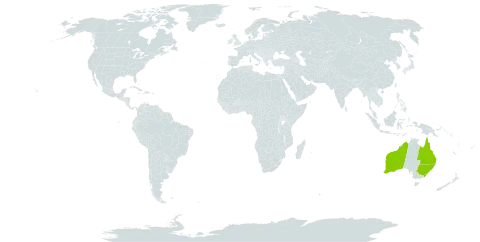Prostrate annual c. 30 cm diam. with many stems, sparsely and shortly pilose with simple and glandular hairs. Leaves elliptic, obtuse; lamina 5–10 mm long; petiole somewhat shorter than lamina. Flowers in axillary glomerules c. 2 mm diam. Terminal flower of glomerule male; tepals 3, shortly united, obovate with inflated limb; stamens 2; pistillode minute. Lateral flowers female; tepals 3, rarely 4, obovoid and inflated when in fruit, white, with narrowly oblong claw, in all c. 0.8 mm long; style 1. Pericarp glossy, adherent. Seed turnip-shaped to depressed-globular, horizontal to oblique, 0.3–0.4 mm high, slightly furrowed over horizontal embryo. Tepals and seed shed as unit.
